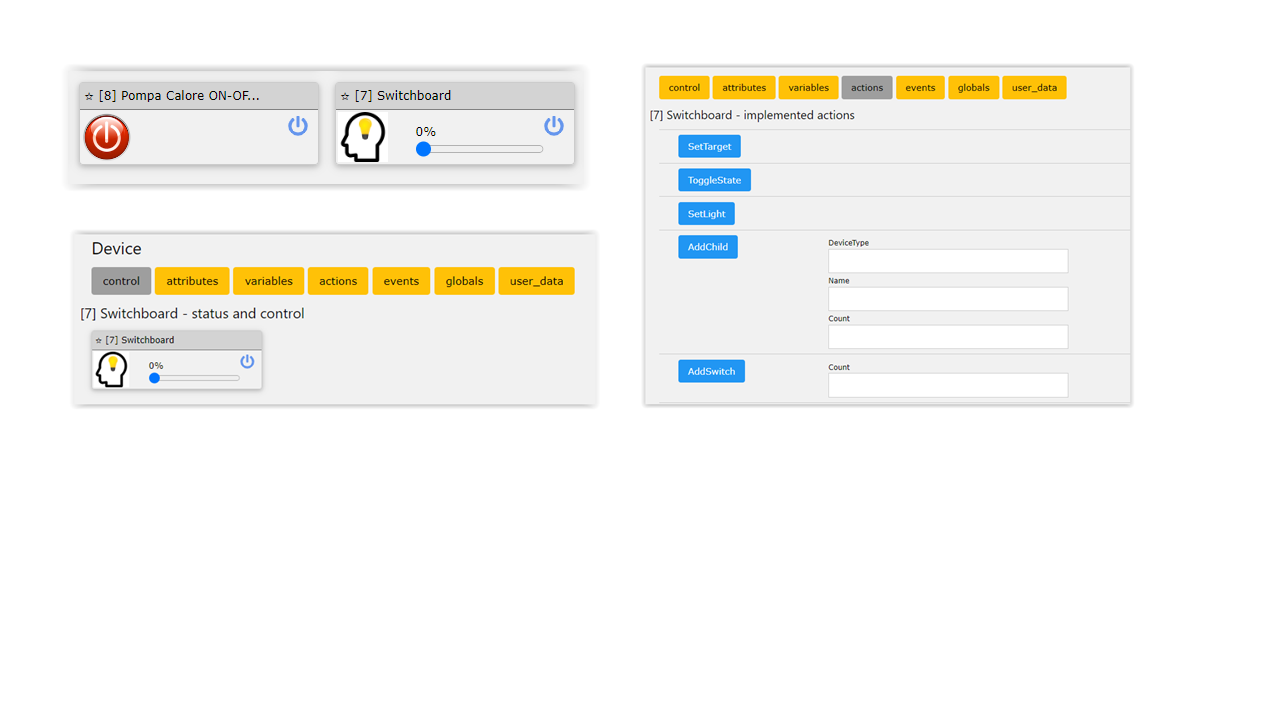iPhone Locator force refresh error
-
Anyone any idea what this might mean? We have two iPhones. Mrs C's and mine. Mine is totally fine. Mrs C's says 'forceRefresh error, check logs / 300 s' and refuses to tell me where she is

Same settings in both instances (in fact I have created a second instance for Mrs C and that does the same). I know the username / password are correct, and the iCloud list populates in the right manner.
The log has this:
2020-07-05 11:58:55.866 luup_log:25: IPhoneLocator: loop: an error occurred during execution of forceRefresh():[string "L_IPhone.lua"]:639: attempt to index local 'obj' (a nil value) 2020-07-05 11:58:55.866 luup.variable_set:: 25.urn:upnp-org:serviceId:IPhoneLocator1.MsgText was: 2020-07-05 11:58 now: forceRefresh error, check logs / 300 s #hooks:0Any ideas?
Cheers
C
-
Folks still trying to resolve this. Could it possibly be the inverted comma in the name of her phone not being escaped?
I'm also seeing this which appears to indicate that it's not happy with the device:
2020-10-05 17:12:46.245 luup.task:: status=2 IPhoneLocator : Bad or No device found:{"maxMsgChar":160,"isMac":false,"lostTimestamp":"","batteryStatus":"Unknown","locFoundEnabled":false,"deviceClass":"iPhone","canWipeAfterLock":true,"isLocating":false,"name":"Rachel's iPhone","features":{"CLK":false,"CWP":false,"WIP":true,"LKM":false,"REM":true,"PSS":false,"KEY":false,"MCS":false,"XRM":false,"CLT":false,"TEU":true,"LMG":false,"LKL":true,"KPD":false,"LLC":false,"SPN":false,"BTR":false,"LCK":true,"WMG":true,"PIN":false,"MSG":true,"SVP":false,"LOC":true,"LST":true,"SND":true},"deviceDiscoveryId":"","audioChannels":[],"modelDisplayName":"iPhone","deviceDisplayName":"iPhone 5s","deviceColor":"e1e4e3-d4c5b3","passcodeLength":6,"fmlyShare":false,"batteryLevel":0,"lostModeCapable":true,"thisDevice":false,"wipeInProgress":false,"id":"y76cfYiF843r0U4gCttq295/E2podyhzV/uD10GRWvU3PR4QHwuwyeHYVNSUwerV","darkWake":false,"locationCapable":true,"deviceModel":"5s-e1e4e3-d4c5b3","baUUID":"","activationLocked":false,"lostModeEnabled":false,"rawDeviceModel":"iPhone6,2","lowPowerMode":false,"locationEnabled":true,"deviceStatus":"203"}Any thoughts?
Cheers
C
-
Nope, that's not it. Changed the name of her phone and it's still doing it. Although the plug in is still showing devices that no longer exist in iCloud.
Really frustrating as now Mrs C is out to work in an office and getting the home / away stuff working again would be great

C
-
Can you trying have the plugin log out and log back into icloud? The last symptom is an indication that it either has cached the devices or that there is something wrong with the icloud device resolution. Could the plugin possibly see multiple devices under the same name and you having picked the wrong one? The error seems to indicate that icloud is not locating this very phone ("Rachel's phone")
-
Can you trying have the plugin log out and log back into icloud? The last symptom is an indication that it either has cached the devices or that there is something wrong with the icloud device resolution. Could the plugin possibly see multiple devices under the same name and you having picked the wrong one? The error seems to indicate that icloud is not locating this very phone ("Rachel's phone")
@rafale77 said in iPhone Locator force refresh error:
Can you trying have the plugin log out and log back into icloud? The last symptom is an indication that it either has cached the devices or that there is something wrong with the icloud device resolution. Could the plugin possibly see multiple devices under the same name and you having picked the wrong one? The error seems to indicate that icloud is not locating this very phone ("Rachel's phone")
I actually deleted the device and re-created it. Rachel's phone now no longer exists (according to iCloud) as it's been re-named Rachel Phone.
iCloud only shows:
Rachel Phone
Chris's Macbook Pro (2)The plugin still thinks that the list is:
Rachel's iPhone
Catman Mac
Rachel's iPad
Rachel iPhone.No idea where it's getting these data and names from.
It's also listed these devices since the Vera days, so its' obviously cached somewhere by Apple.
As I say, mine works just fine, and there are apostrophes in some of my device names. There's also an old historic list of devices. The only difference I can see now is that my preferred device is top of the list so.
Any other ideas?
C
-
Would you mind deleting the plugin device and restarting it? This is an area of the plugin I absolutely didn't touch at all. It is all @amg0's code and it has been working for me. Are you saying that the plugin now sees both the old and the new device names? You do not see Rachel Phone but you see Rachel iPhone?
-
Would you mind deleting the plugin device and restarting it? This is an area of the plugin I absolutely didn't touch at all. It is all @amg0's code and it has been working for me. Are you saying that the plugin now sees both the old and the new device names? You do not see Rachel Phone but you see Rachel iPhone?
@rafale77 said in iPhone Locator force refresh error:
Would you mind deleting the plugin device and restarting it? This is an area of the plugin I absolutely didn't touch at all. It is all @amg0's code and it has been working for me. Are you saying that the plugin now sees both the old and the new device names? You do not see Rachel Phone but you see Rachel iPhone?
Totally get this isn't your code bit, but as you know, I'm banned

Now interestingly I found the old device names. Despite not being listed on the account, they were listed in 'Find my iPhone'
There was another 'Rachel's iPhone' left over from forever ago, which I have deleted in Find my iPhone and now no longer shows in the plugin list.
I've restarted Luup still seeing the force refresh error, but I think we might be closing in. I'll delete the device first, re create it and see what happens.
Cheers
C




